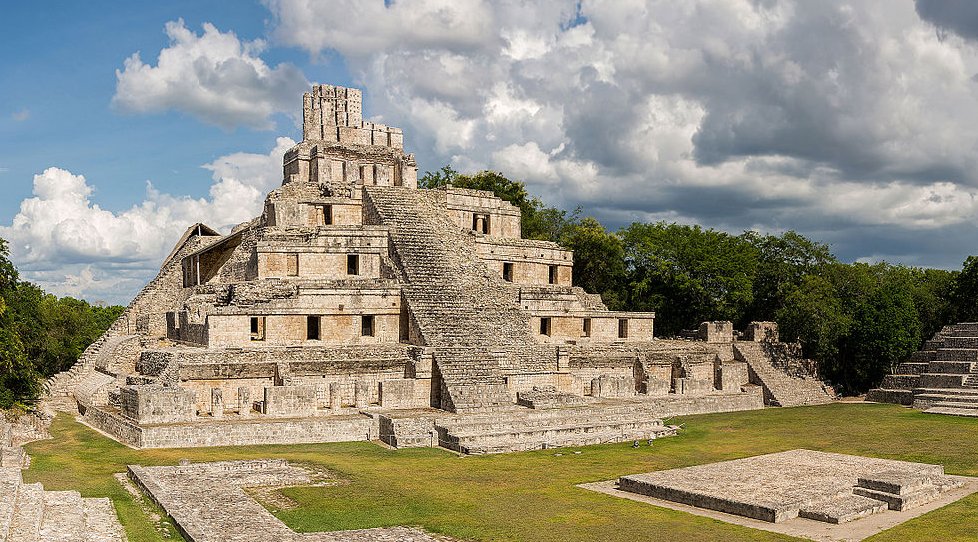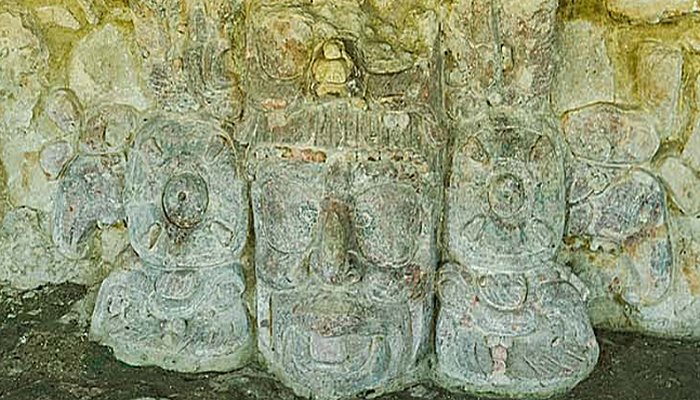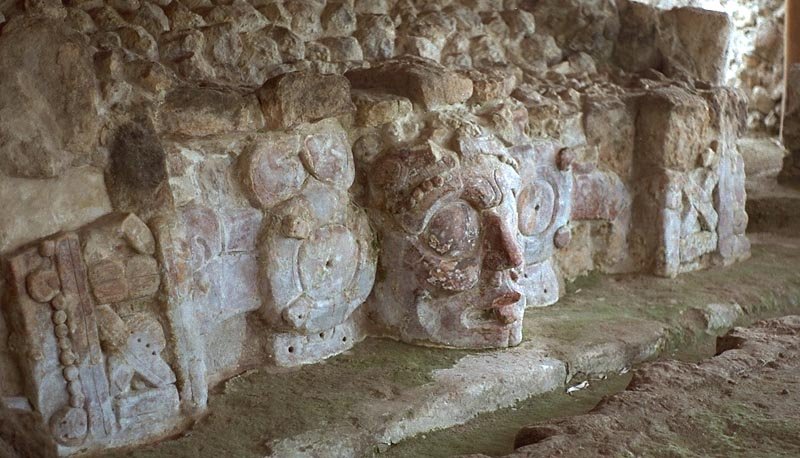Edzna: Ancient Maya City With Sophisticated Underground System Of Canals To Control Unpredictable Floods
A. Sutherland - AncientPages.com - Edzná is an ancient place populated in 400 BC and abandoned c. 1500 AD. It is a Maya archaeological site in the north of the Mexican state of Campeche.
Much of what is known about Edzná and its historical chronology originates from the engravings on the discovered stelae.
The Great Acropolis, with the Building of the Five Floors. IOmage credit: Ralf Roletschek - GFDL 1.2
However, it is not enough to uncover all the secrets of this ancient site; therefore, the decline and eventual abandonment of Edzná remains a mystery.
The place's name comes from an old Mayan-Yucatec word, probably referring to the "Itzáes," an ethnic group of Guatemala associated with the Maya people. So, one can say that in this case, Edzna's name would mean "House of the Itzáes."
There is also another possibility that Edzna means "House of the Echo" since a specific acoustic phenomenon occurs between certain main buildings at the site.
Edzna's name could also mean "House of Gestures" due to the stucco figure that once existed on the crest of the tallest building in the area. Edzna is not only a fascinating site because of its long history.
Temple of the Masks at Edzna. source
Although the site was discovered in 1907, the first excavations started a half-century later and revealed remarkable technological developments of the Maya people. To fight troublesome floods in Edzna, the Maya devised an ingenious plan to keep high humidity almost all year round, not only during the rainy season.
They developed an advanced hydraulic system with a network of canals that drained the valley. The water was directed to a lagoon and transformed into a dam. Other channels served to irrigate the fields, so cultivation flourished, and at the same time, the channels provided plenty of fish.
In the Late Classic period, Edzná was part of the Calakmul society, and Calakmul means "City of the Two Adjacent Pyramids."
It was one of the three largest and most significant Mayan city-states, next to Guatemala's Tikal and Palenque.
Temple of the Masks. Coe, Andrew, "Archaeological Mexico", p. 303. source
At the time, Calakmul was ruled by the dynasty of the Serpents, and these rulers identified themselves as Divine Lords of the Snake ("k'uhul kaanal ajaw").
The most famous structure in Edzná - and perhaps its most outstanding - is the Five-Story Temple, measuring 31.5 meters in height, painted bright red in antiquity, and surrounded by other prominent temples and ceremonial platforms up the city's magnificent acropolis.
On the outside of this Acropolis, the entire area is enclosed by a large 135-meter elongated platform that spans the site's core. The structure shows evidence of several large rooms used for administrative purposes, while the surrounding area served as the central marketplace.
The ancient Maya places had famous ballcourts or Pok ta Pok, and so had Edzna. The southern temple of Edzna is also an interesting structure. It is an excellent example of Teotihuacan-inspired architecture with adornments, including stucco figures and masks representing solar and rain deities.
Panorama of Central Plaza with Acropolis - Edzna Archaeological Site - Campeche State - Mexico - 03.Image credit: Adam Jones, Ph.D. - CC BY-SA 3.0
The Temple of the Masks features stucco depictions of the Maya Kinich Ahau, the solar deity Kinich Ahau. The faces have human features and attributes associated with the ruling elites, such as squint eyes, nose rings and earmuffs, mutilated teeth, and zoomorphic headdresses.
This temple – located to the west of the Small Acrópolis - was discovered in 1988, At the base of this structure, excavations revealed two magnificent stucco masks. One depicts the young Sun God at sunrise, and the other, the old Sun God at sunset.
At Lamanai, Belize, there is also the Temple of the Masks, an impressive structure adorned by 13-foot masks of an ancient Maya King, considered either an Olmec God or Kinich Ahau Maya Sun God) with a headdress of a crocodile.
Unfortunately, once typical for most Edzna structures, these masks did not survive.
Written by – A. Sutherland - AncientPages.com Senior Staff Writer
Updated on January 4, 2024
Copyright © AncientPages.com All rights reserved. This material may not be published, broadcast, rewritten or redistributed in whole or part without the express written permission of AncientPages.com
More From Ancient Pages
-
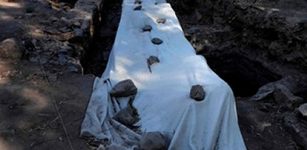 Archaeologists Unearthed Shrine To Apostle Peter In Israel’s Galilee
Archaeology | Aug 2, 2019
Archaeologists Unearthed Shrine To Apostle Peter In Israel’s Galilee
Archaeology | Aug 2, 2019 -
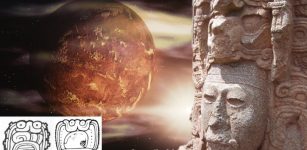 Mysterious Ancient Maya ‘Star War’ Glyph And Its Possible Connection To Venus
Archaeoastronomy | Feb 20, 2019
Mysterious Ancient Maya ‘Star War’ Glyph And Its Possible Connection To Venus
Archaeoastronomy | Feb 20, 2019 -
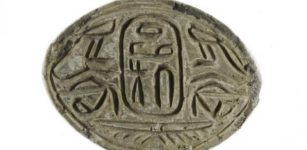 Hyksos: 15th Dynasty Rulers Of Ancient Egypt, Were An Internal Takeover
Archaeology | Jul 15, 2020
Hyksos: 15th Dynasty Rulers Of Ancient Egypt, Were An Internal Takeover
Archaeology | Jul 15, 2020 -
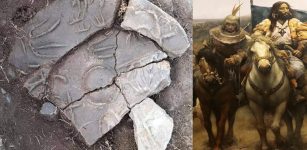 Lost Ancient Dragon City Of The Xiongnu Empire Discovered In Mongolia
Archaeology | Jul 22, 2020
Lost Ancient Dragon City Of The Xiongnu Empire Discovered In Mongolia
Archaeology | Jul 22, 2020 -
 Weapons Of Ancient Aztec Warriors Of Mesoamerica
Featured Stories | Mar 23, 2017
Weapons Of Ancient Aztec Warriors Of Mesoamerica
Featured Stories | Mar 23, 2017 -
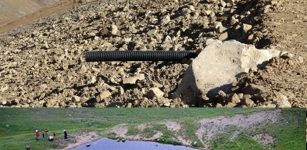 12,000-Year-Old Crater Dipsiz (‘Bottomless’) Lake, Searched For Gold, And Destroyed In Legal But Controversial Excavation
Archaeology | Nov 17, 2019
12,000-Year-Old Crater Dipsiz (‘Bottomless’) Lake, Searched For Gold, And Destroyed In Legal But Controversial Excavation
Archaeology | Nov 17, 2019 -
 New Study Questions Claims Homo Naledi Was Advanced
Evolution | Nov 13, 2023
New Study Questions Claims Homo Naledi Was Advanced
Evolution | Nov 13, 2023 -
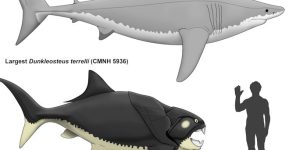 Cleveland’s Prehistoric Sea Monster Had A Mouth Twice As Large As A Great White Shark
Fossils | Mar 3, 2023
Cleveland’s Prehistoric Sea Monster Had A Mouth Twice As Large As A Great White Shark
Fossils | Mar 3, 2023 -
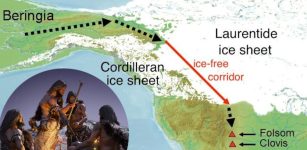 The Americas Were Not Populated Via The Ice-Free Corridor More Than 15,600 Years Ago – New Study Of Boulders Reveals
Archaeology | Mar 23, 2022
The Americas Were Not Populated Via The Ice-Free Corridor More Than 15,600 Years Ago – New Study Of Boulders Reveals
Archaeology | Mar 23, 2022 -
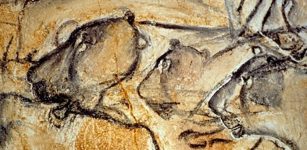 Chauvet-Pont d’Arc Cave And Surrounding Landscape – What Did The Ancient Artists See?
Archaeology | Apr 29, 2021
Chauvet-Pont d’Arc Cave And Surrounding Landscape – What Did The Ancient Artists See?
Archaeology | Apr 29, 2021 -
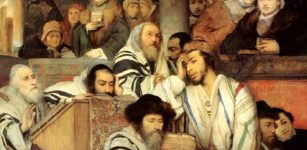 Ancient DNA From Medieval Germany Reveals The True Story Of Ashkenazi Jews
Archaeology | Nov 28, 2022
Ancient DNA From Medieval Germany Reveals The True Story Of Ashkenazi Jews
Archaeology | Nov 28, 2022 -
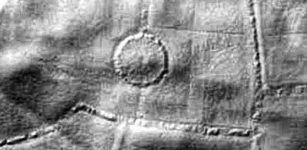 LIDAR Technology Reveals Lost Bronze Age Forts In Devon
Archaeology | May 4, 2020
LIDAR Technology Reveals Lost Bronze Age Forts In Devon
Archaeology | May 4, 2020 -
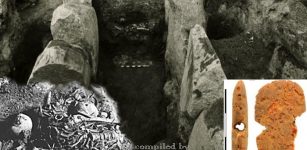 Renewed Excavations Of Unique More Than 5,000-Year-Old Megalithic Tomb Found In Poland
Archaeology | Dec 28, 2017
Renewed Excavations Of Unique More Than 5,000-Year-Old Megalithic Tomb Found In Poland
Archaeology | Dec 28, 2017 -
 Unique discovery of unknown inscription may change the history of scripts as we know it.
News | Aug 23, 2015
Unique discovery of unknown inscription may change the history of scripts as we know it.
News | Aug 23, 2015 -
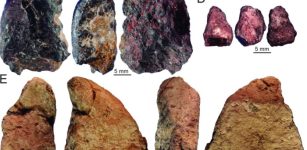 Homo Sapiens In China And What Happened When They Encountered Denisovans Or Neanderthals
Archaeology | Mar 4, 2022
Homo Sapiens In China And What Happened When They Encountered Denisovans Or Neanderthals
Archaeology | Mar 4, 2022 -
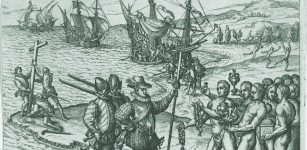 Caribbean Cannibalism Theory – Debunked By Researchers
Archaeology | Apr 16, 2021
Caribbean Cannibalism Theory – Debunked By Researchers
Archaeology | Apr 16, 2021 -
 Strange Underwater Mini-Pyramid Older Than Stonehenge With Unknown Purpose – Who Built It?
Featured Stories | Sep 12, 2021
Strange Underwater Mini-Pyramid Older Than Stonehenge With Unknown Purpose – Who Built It?
Featured Stories | Sep 12, 2021 -
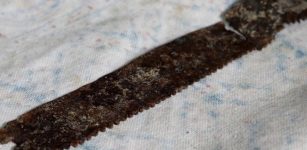 Rare 2,500-Year-Old Saw Discovered At The Ancient Hittite City Hattusa
Archaeology | Nov 27, 2023
Rare 2,500-Year-Old Saw Discovered At The Ancient Hittite City Hattusa
Archaeology | Nov 27, 2023 -
 2,000-Year-Old Fountain In Kibyra, The City Of Gladiators Flows Again
Archaeology | Jan 3, 2023
2,000-Year-Old Fountain In Kibyra, The City Of Gladiators Flows Again
Archaeology | Jan 3, 2023 -
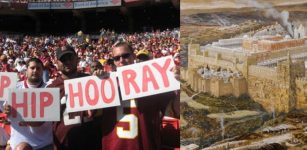 The Phrase Hip Hip Hooray Has Ancient Roots
Ancient History Facts | Jun 6, 2018
The Phrase Hip Hip Hooray Has Ancient Roots
Ancient History Facts | Jun 6, 2018

